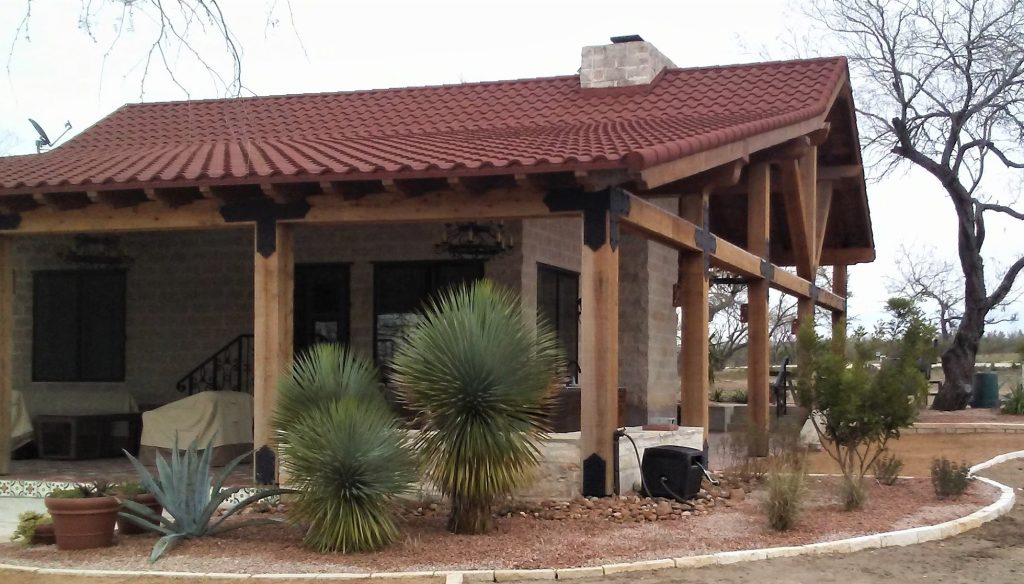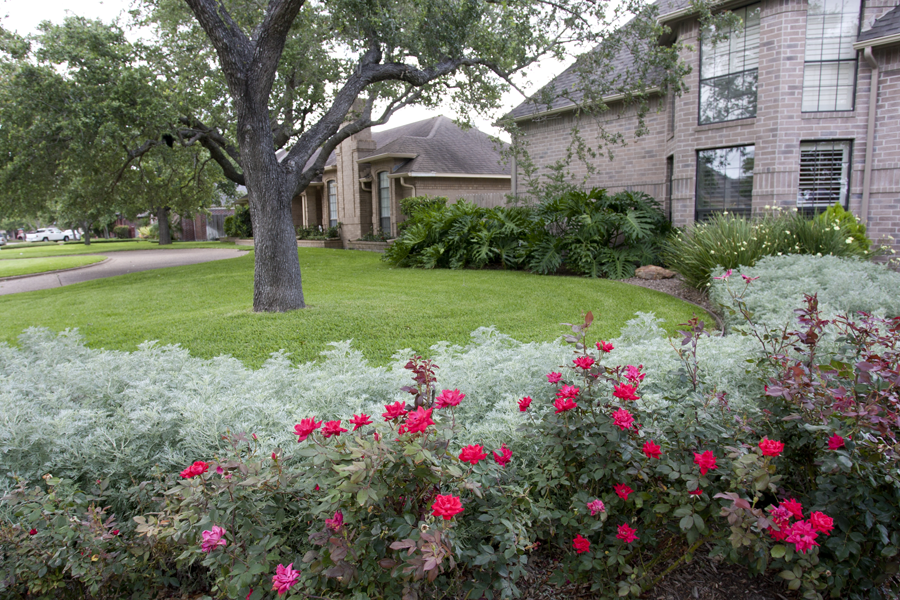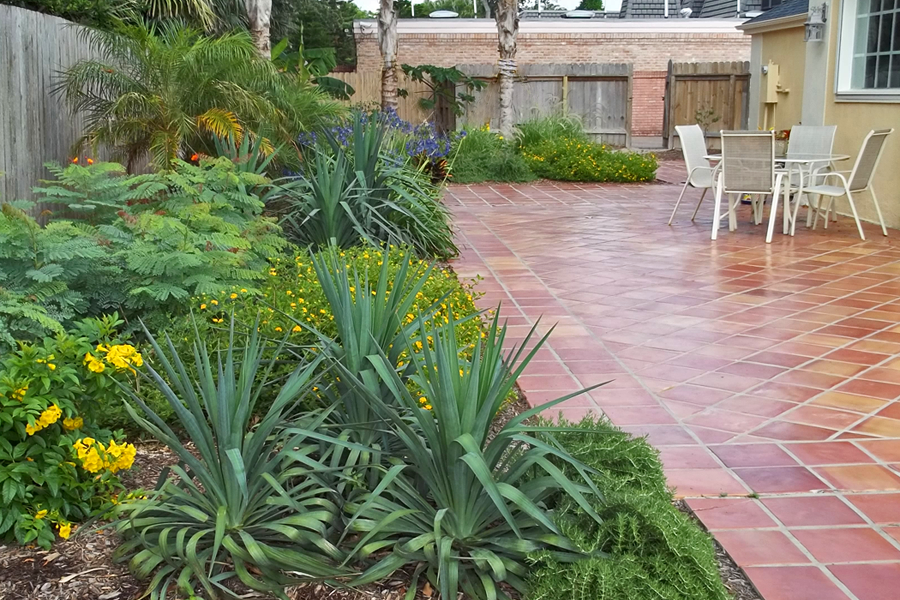 What does Xeriscape mean to you? Cactus and rocks? Yes, it could be that, but it can be much more! Texas native plants? Yes, many Texas natives fit a xeriscape, but also plants from Italy (rosemary), Mexico (firecracker plant), Madagascar (periwinkles), and more! Even a lily pond could have a place in a xeriscape.
What does Xeriscape mean to you? Cactus and rocks? Yes, it could be that, but it can be much more! Texas native plants? Yes, many Texas natives fit a xeriscape, but also plants from Italy (rosemary), Mexico (firecracker plant), Madagascar (periwinkles), and more! Even a lily pond could have a place in a xeriscape.
 Xeriscape is planning and constructing an attractive landscape that requires little or no irrigation. So thirstier elements, such as Raleigh St. Augustine lawns, petunias or rosebushes, or that lily pond, can be limited in size, grouped together, used only in high-impact areas of the landscape, and hopefully, watered with “salvaged” water collected from rooftops, patios, air-conditioner condensate, or grey water.
Xeriscape is planning and constructing an attractive landscape that requires little or no irrigation. So thirstier elements, such as Raleigh St. Augustine lawns, petunias or rosebushes, or that lily pond, can be limited in size, grouped together, used only in high-impact areas of the landscape, and hopefully, watered with “salvaged” water collected from rooftops, patios, air-conditioner condensate, or grey water.
 Your xeriscape can be as simple and colorful as cenizo (Texas sage), red yucca, and mesquite trees (for shade and bold form), all from Texas, or a very sophisticated mix of xeric plants from xeric areas around the world combined with flagstones (or repurposed broken concrete), colorful pots, and striking shade structures.
Your xeriscape can be as simple and colorful as cenizo (Texas sage), red yucca, and mesquite trees (for shade and bold form), all from Texas, or a very sophisticated mix of xeric plants from xeric areas around the world combined with flagstones (or repurposed broken concrete), colorful pots, and striking shade structures.
 Growing human populations and consequently shrinking water supply mandate reduced water use for our future. We might as well start thinking about Xeriscape and how to design the right landscape that suits us and still uses less water.
Growing human populations and consequently shrinking water supply mandate reduced water use for our future. We might as well start thinking about Xeriscape and how to design the right landscape that suits us and still uses less water.
 -James Gill
-James Gill



Nora says
Hello:
What is your fee for a xeriscape consultation?
Nora
361-425-1200
Jesse says
Hi Nora – one of our landscape designers will reach out to you.
james says
Great Idea, Allison, thanks!
Allison Carolyn says
Following your instructions for lawn and plants.
What about a pollinator garden design/plant suggestions?
Amy Gibson says
Regarding photo of red tiled roof building in this article… I am interested in finding out more about its construction, this plan possibly might work for me.
james says
There is no ready-made plan for this residence. I suggest you show the photo to a building designer or architect and have them design something with the features you desire.